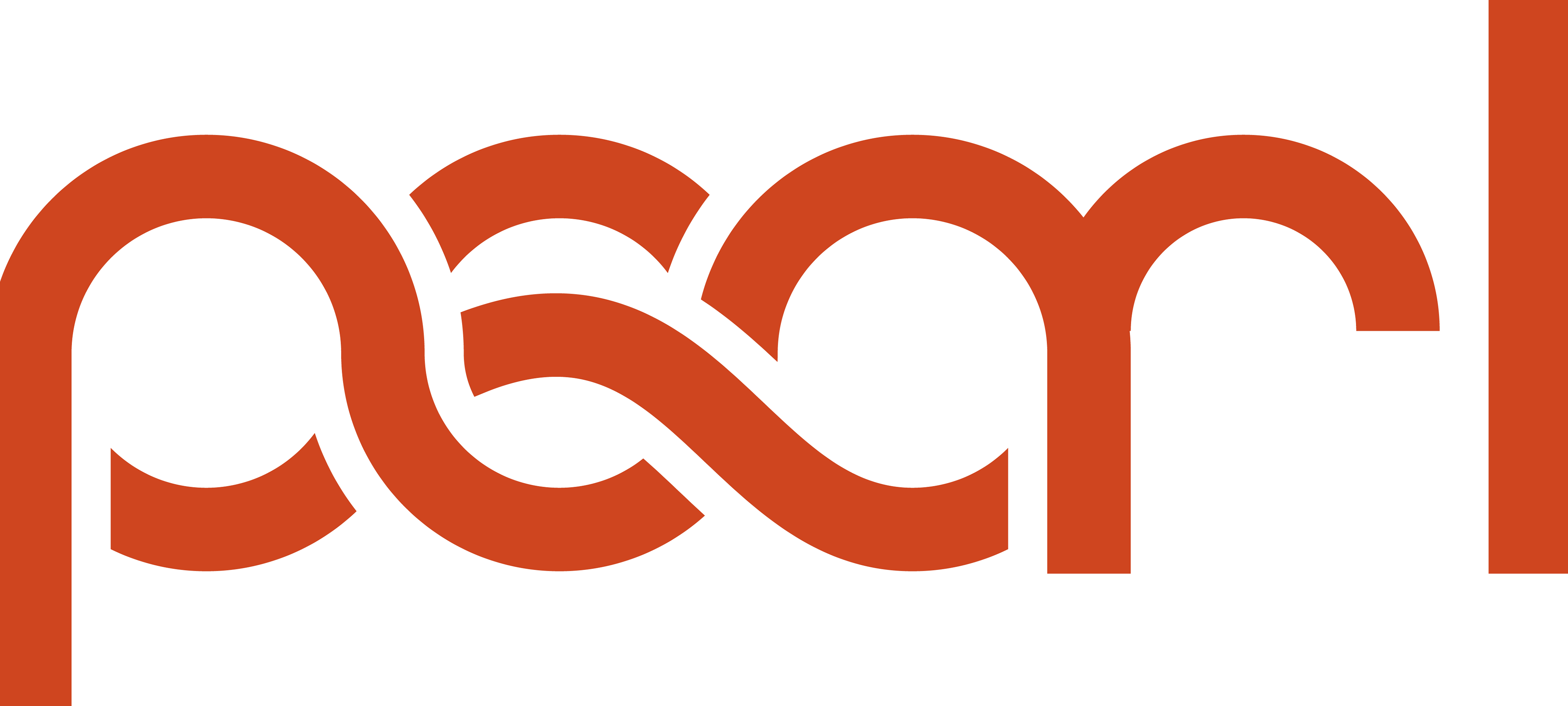SUMMARY
I designed an app called MyChoice that helps women crowdsource and consolidate resources aiding toward reproductive healthcare. The project scope includes secondary research, user interviews, wireframing, user testing, and UI design.
I took this course at Augsburg University of Applied Sciences in Augsburg, Germany as part of an exchange program.
RESEARCH & STRATEGY
I designed this app for a course called Emergency Design, which prompted us to design some tool that helps users during some kind of emergency.
I began with a mind map generating concepts surrounding my chosen emergency of unwanted pregnancy. This helped clarify the goal and scope of my proposed solution.
I then interviewed a professional women's healthcare worker who gave me valuable insights and direction toward a solution. I discovered a primary user pain point: the lack of a clear, centralized platform that could be used to share resources.
From this new sense of direction, I decided to design an app that functions as a platform for women to locate health care and share resources.
I generated ideas for an information architecture and sketched wireframes, detailed below.
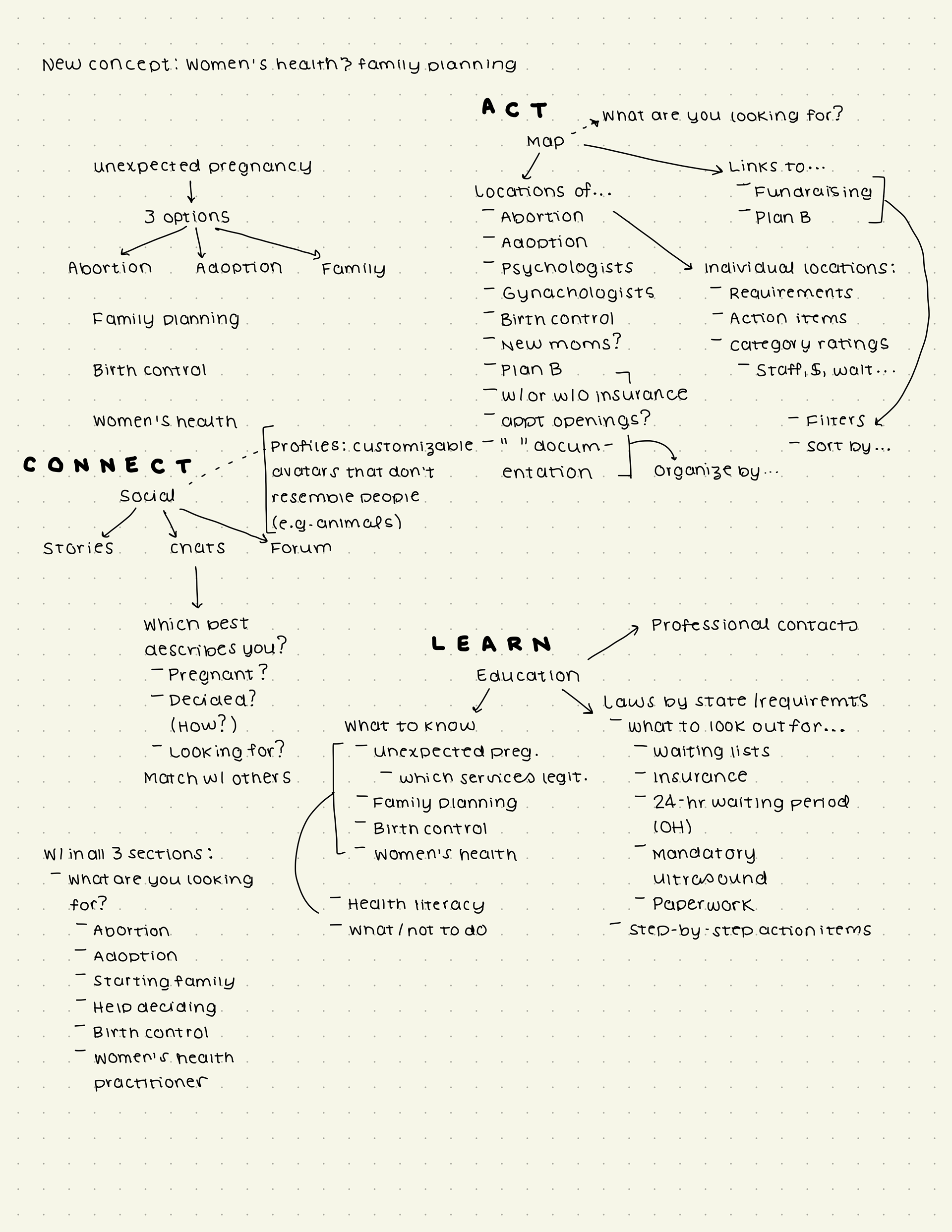
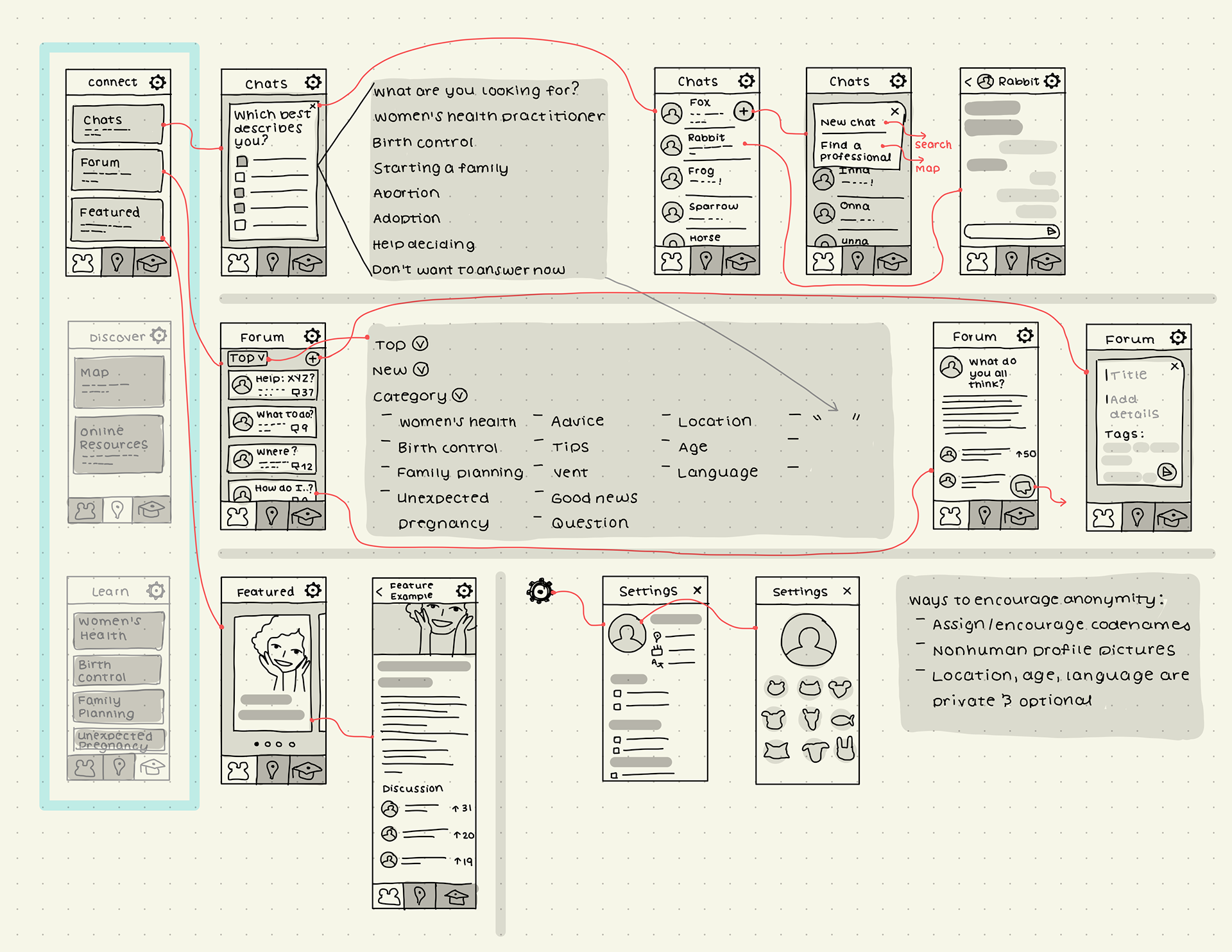
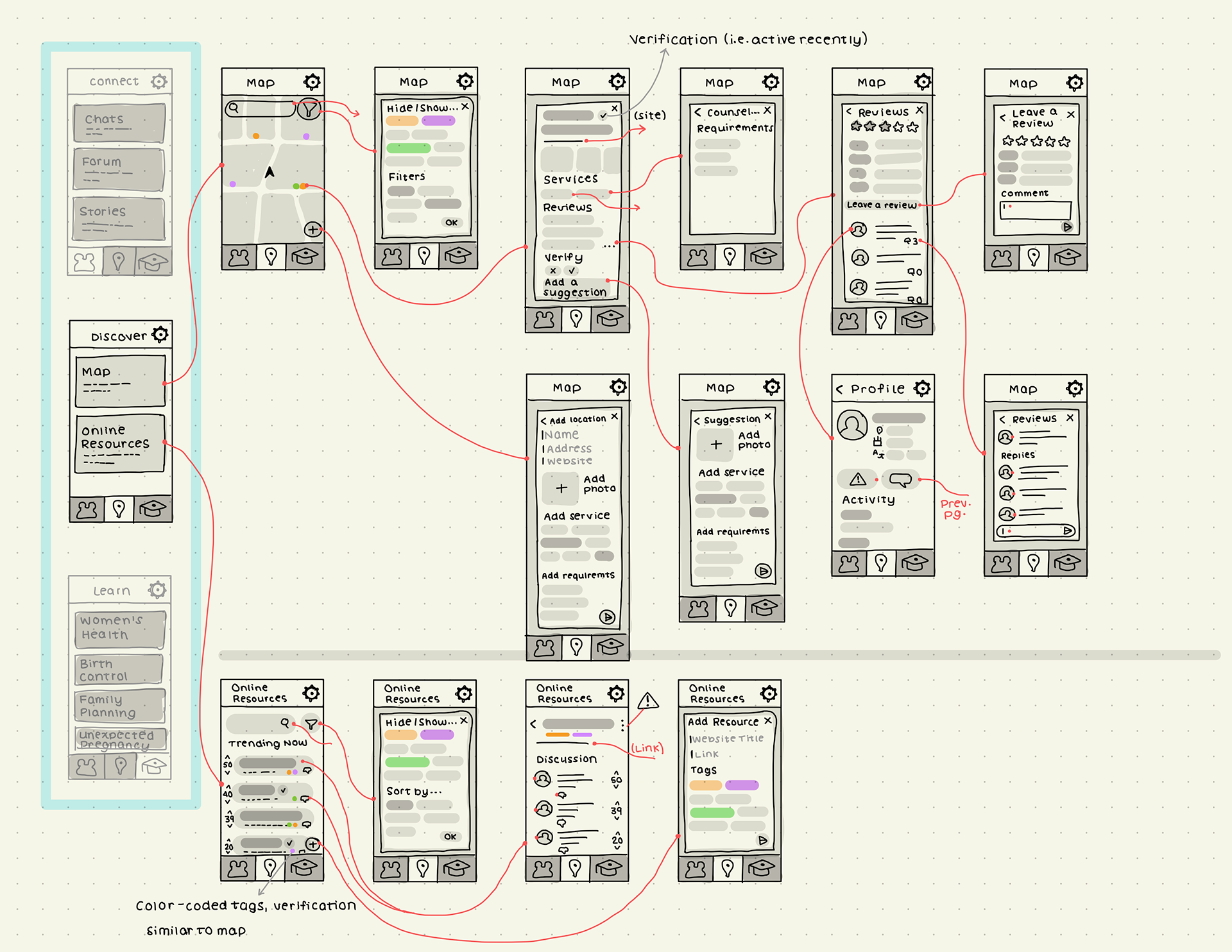
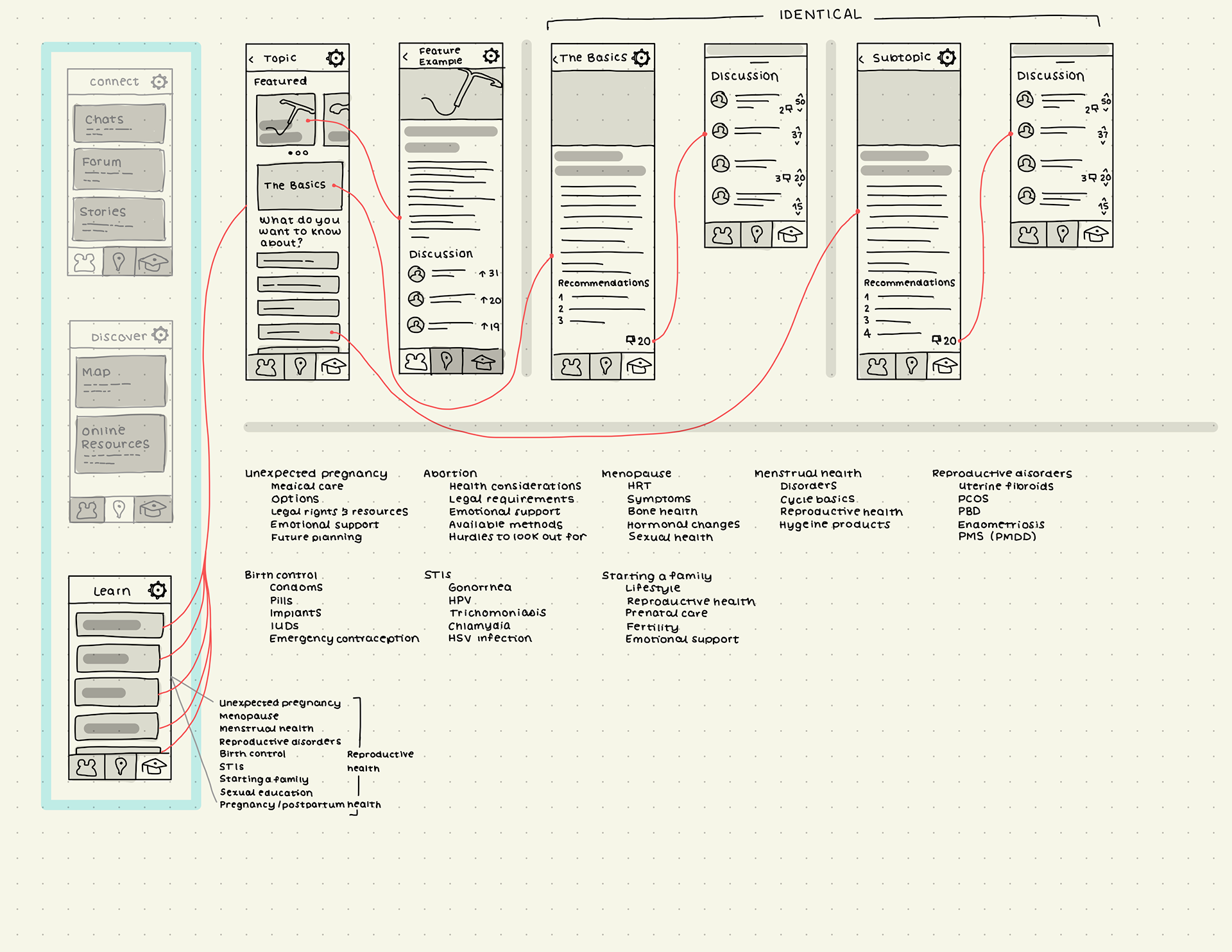
When creating a visual mood board, the goal of consolation and clarity informed my decisions, from the simple, intuitive sitemap to the light, breathable aesthetic.
Finally, I prototyped an interactive interface in Adobe XD and performed user testing. I presented my findings and proposed solution.
MyChoice logo
Visualized problem statement
PROTOTYPE
By tapping on individual locations, users can view the comprehensive user-generated information of a location, including a list of services they provide, insurance policy, and further reviews and discussion. Users can verify locations or add suggestions, keeping the information accurate and updated.
The Online Resources section uses a forum format, which comprises all resources that can't be displayed on the map. Users can post, comment, and filter by post type. All accounts remain anonymous, and the app uses two-factor authentication.
My user research found that women primarily shared information with each other through word-of-mouth. Adapting this flow of information into a visual format strengthens comprehension and amplifies spread.
PROMOTIONAL STRATEGY
To promote the app, I mocked up business cards that use a cutout representing the theme of self-determined futures. I also mocked up stickers that could be placed by users, keeping with the theme of mutual aid.
Menstrual care products and pregnancy tests serve as the primary touchpoint for these promotions.
